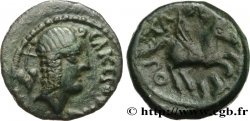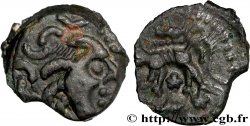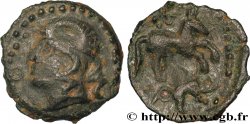正面
正面的文字 LÉGENDE INDÉTERMINÉE (?).
正面的说明书 Tête stylisée à droite, les mèches tirées en arrière et bouletées, le nez allongé ; petit rang de perles sous le cou, grènetis.
背面
背面的文字 ANÉPIGRAPHE.
背面的说明书 Cheval ailé à droite, la crinière perlée ; au-dessous, une croix cantonnée de quatre points.
评论
历史细节
GALLIA - CARNUTES (Beauce area)
(2nd - 1st century BC)
The Carnutes were one of the most important and powerful peoples of independent Gaul. Their territory stretched between the Loire and the Seine over the Orléanais, the Blésois and the Chartrain country as far as Mantes, that is to say the greater part of the current departments of Loiret, Loir-et-Cher and Eure-et-Loir and part of Yvelines. Their economic center was located in Genabum (Orléans), but their main oppidum seems to have been Autricum (Chartres). They would have participated in the legendary Bellovèse expedition to Italy. They formed the geographical center of Gaul and, long before the start of the Gallic Wars, Roman merchants knew the way to Genabum (Orléans), then a major commercial center. The Carnutes were also famous for their forest where the annual meeting of the Druids was held.. At the start of the War, Caesar had wintered with the Carnutes in 57 BC.. -VS. and had imposed on them as king Tasgetios, who was assassinated in 54 BC. -VS. The following year, they submit but at the beginning of 52 BC. -VS. , they are perhaps at the origin of the revolt which will raise the whole of Gaul. It is possible that the conspirators met during a druidic assembly. The Carnutes massacred the Roman settlers and merchants of Genabum (Orleans) under the leadership of Cotuatos and Conconnétodumnos. Caesar came to besiege the city which he took, pillaged and burned, marking the beginning of hostilities. The Carnutes then provided a contingent of twelve thousand men to the relief army in order to clear Alesia. After the fall of Vercingetorix, the following year, the Romans carried out a new campaign of pacification and Caesar punished the assassins of the previous year. Caesar (BG. II. 35; V, 25, 29, 56; VI, 2-4, 13, 44; VII. 2, 3, 11, 75; VIII. 4, 5, 31, 38, 46). Strabo (G. IV, 2, 3); Livy (HR. V, 34). Ptolemy (G. II, 8). Kruta: 68, 187, 334.







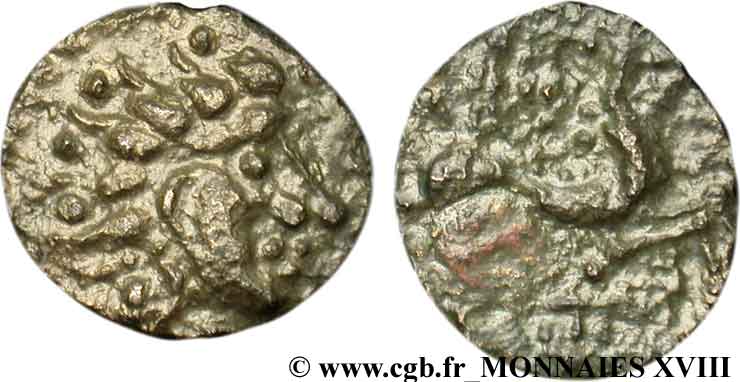
 对产品描述纠错
对产品描述纠错 打印
打印 分享我的选择
分享我的选择 提问
提问 Consign / sell
Consign / sell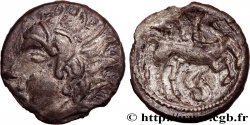
 产品介绍
产品介绍
